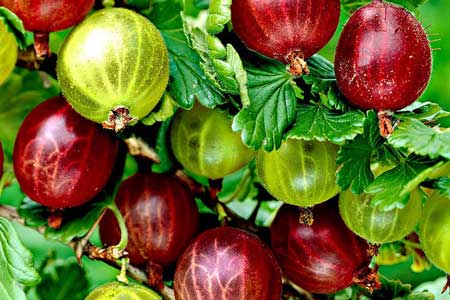January Gardening
Keeping your garden worthy of admiration
Summer is full of sunny warm days spent outdoors enjoying nature, the beach, BBQs with friends and family and, of course, tending to the garden. In these hazy long days of summer winter seems such a long way off but it's time to start planting winter greens - and before the end of this month. This will give them enough time to grow and reach sufficient maturity before growth stops.
Here are our tips on what to plant, when:
Vegetables
Plant early and late varieties of cabbage and cauliflower for continuous greens all through the winter months as cabbages such as Greyhound and Little Sweetie will mature earlier than the late varieties of Winter Cross and Savoy that can take six or seven months to mature. Keep Yates Derris Dust handy to stop the white butterfly from raising and feeding their family in your cabbages.
Don’t plant cabbage, cauliflower or broccoli into soil that has previously grown members of the cabbage or turnip family because of the danger of ‘club root’ disease.
- If ‘club root’ is a problem try our ‘Success’ range of cabbage and cauliflower plants that have a resistance to the dreaded ‘club root’ disease. Alternatively, try using a dressing of lime or even a piece of rhubarb stalk in the planting hole.
- If Grey Aphid is a problem attack these little critters with a spray of Yates Success.
This is your last chance to plant Leeks and Celery into trenches that have had plenty of compost worked into the bottom of each trench. When planting leeks during hot weather, trim back leaves to reduce moisture loss while the roots get themselves established. Regular watering is the key after transplanting to help get the roots growing well.

During high summer deep watering of the garden twice a week will encourage roots to grow downwards seeking moisture and nutrients.
Berries
Now is also the time to prune gooseberry and currant bushes.
Remove any branches that have produced fruit, in order to let air circulate through the bushes. Lightly snip some new growth back but gently does it because the new growth is next years fruiting canes.

Flowers and Perennials
Midsummer is a time to enjoy the prettiness of the flower garden and perennials are reaching their exuberant best. Phloxes, margurite daisies, roses, lilies, perennial wallflower ‘Lilac Joy', Nepeta 'Six Hills Giant', delphiniums as well as some self sown sweet peas that have wandered away from their obelisk supports waft a fragrance into the warm evening air of our garden.
Most plants have one aim in life, and that is to flower and form seed. As soon as their seeds ripen annuals die off and perennials retire for the rest of the summer.
Dead-head, feed and water:
Dead heading roses is more than drifting around the garden dreamily snipping here and there. Armed with sturdy gloves and secateurs cut the dead blooms off cleanly just above a strong set of five leaves and a new shoot will form from this point. After the first flush of blooms feed your roses with Rose Food and keep up with a summer spraying program. Yates Shield will control aphids, black spot and mildew.
Summer pansies can be prevented from collapsing with mildew by spraying them with Yates Shield when spraying your roses. Because we want them to flower for the longest possible time, remove their faded flower heads to persuade them to produce even more flowers.
To persuade delphiniums to bloom again chop the plants down to the ground as the flowers fade then feed and water them lavishly to encourage a new flush of growth.
Young rhododendrons will benefit from dead heading instead of wasting energy producing unwanted seed.
Most other summer flowering plants will not only bloom longer but look prettier during their flowering when we make a little effort to dead head them. The best bit is when you have completed your jobs and can stand back in the sunshien and admire your flourishing flower garden.
Poinsettias given to us at Christmas can flower up to nine months if they are enjoying a good light position in the house. Allow the potting mix to dry out a little between watering because overwatering is the most common form of disaster with poinsettia. Insignificant yellow flowers clustered in the centre are short lived but the surrounding red bracts remain colourful for many months. When these bracts begin to shatter and the plant deteriorates allow the potting mix to dry, cut the foliage back by one third and put the plant in a warm dry place until shoots appear, then begin watering again. Transplant into a larger pot and pinch out the tips to encourage bushy growth. Red poinsettias are usually the traditional Christmas plant but there are lovely dusky pinks, pleasing creams and white poinsettias.
Happy Gardening Everyone!

7347